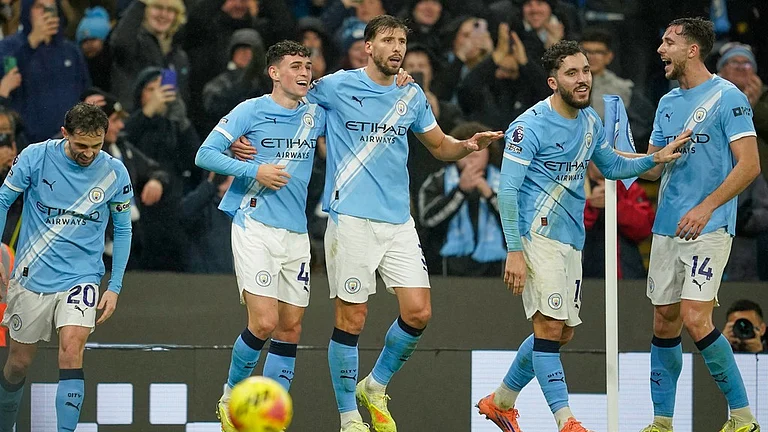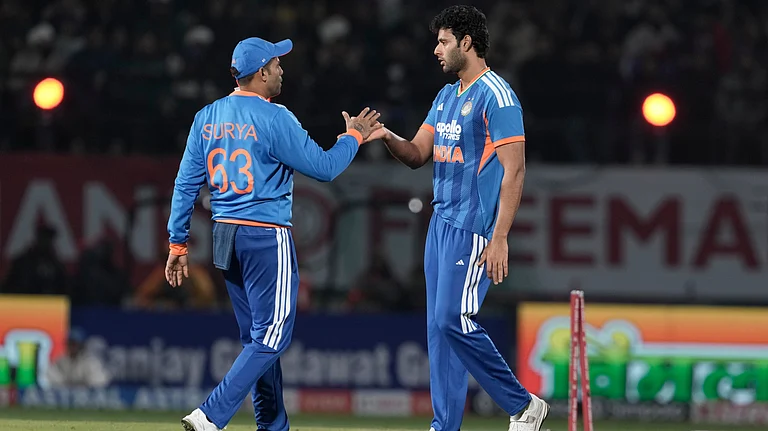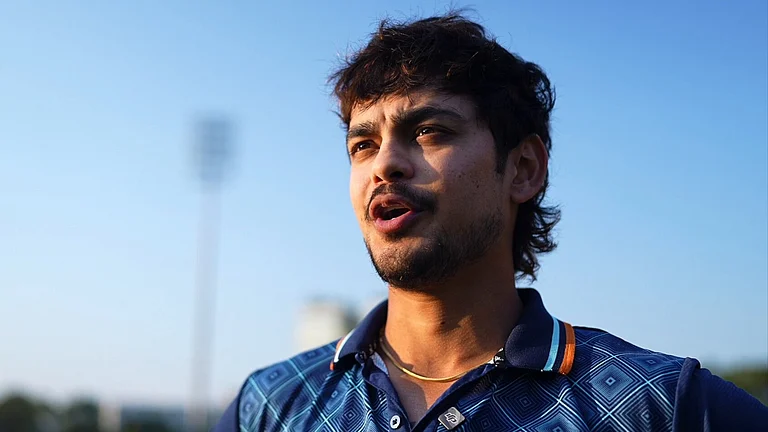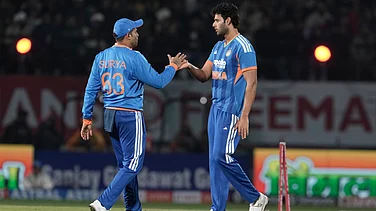FOUR years ago, as a Karnataka State Road Transport Corporation bus speeded towards Bangalore, J. Chandrashekhar, a soapnut powder maker from Mysore, spent three hours telling his co-passenger that India would appreciate his sons skills only when he begins winning matches for his countryall on his own.
The son, Javagal Srinath, 28, had failed the day before to take India home in a crucial league match of the 1992 World Cup against Australia. Needing a few to win, Babu, as Srinath is called at home, had lofted the ball high, only for it to fall short.
Thatfalling shortsoon became standard routine for Brown Lightning. He would make a bunny out of Brian Lara in the Tests and get hammered by Romesh Kaluwitharana in the one-dayers. He would hit Imran Khan and Courtney Walsh for sixes and still end up on the losing side.
Was there no justice in the world? Srinath decided to check it out. With his bat on October 21 as India reeled at 164 for 8 against Australia in the Titan Cup in front of his home crowd. And then with the ball on November 23 as South Africa chased 170 in the Ahmedabad Test. His fathers wish had come true in Indias 300th Test.
The six wickets for 21 runs, which made Sachin Tendulkar the first Indian captain since World War II to win two consecutive Test matches after taking over, was more welcome: it was Srinaths first five-wicket haul, after 22 Tests; Venkatesh Prasad had managed it in his second. Justice! For South Africa, too, falling short is becoming routine. Needing 79 to win and eight wickets left on the final day in Barbados soon after their international return, they collapsed to Curtley Ambrose. Then the World Cup. Then the Titan Cup. Then this.
Whether an Azharuddin would have changed ends for Kumble and given the ball to Srinath remains a moot question. But Tendulkars was a masterstroke. 96 for 4, became 96 for 6. 100 for 6 became 100 for 8. 105 for 8 became 105 all out, the visitors lowest score ever. The number four Test team had beaten the number one. The editors of Wisden who devised the rankings can chew on it. As can Clive Lloyd, who says the current Australia-West Indies series is the "official" contest for world champion. "If the October heat doesnt grill them, Srinath will," warned hoardings last year. The instrumentation technology engineer did just that in November, busting the odometer in a scorching display of fast bowling that had even White Lightning nodding in approval. Sambar power.
Wrote S.S. Ramaswamy of PTI: "He bowled fast through the air like Donald and unerringly hit a few spots on the pitch from where the ball shot through or bounced unexpectedly. The bounce preyed on the batsmens minds and led to their doom." Ravi Shastri put it more simply: "Hes done to them what other fast bowlers do to us. This is the fastest Ive seen an Indian bowl in two decades." Employed by Vijaya Bank, Srinath says all he did was bowl as fast as he could and leave the ball to do the rest. But what the success of the sensational speed-burst has proved is how self-defeating the Indian cricket establishments labour in preparing damp, underprepared wickets to help spinners is.
There were shades of January 1975when Andy Roberts took 12 wickets on a Chepauk turnerat the Motera last week. First Donald proved that there was something in it for the speedsters. Then Srinath showed they could even win a match if they wanted badly enough. Srinath was on a hat-trick thrice, and will be so till he bowls his first ball in Calcutta.
Says cricket writer Raju Bharatan: "The Srinath-Donald show demonstrates that those willing to bend their backs can strike paydirt on pitches intended to help spinners. If this is so, we should do a good rethink on preparing such pitches. We do have good fast bowlers who can give as good as they get." Victory and the success of the middle order notwithstanding, the cricket think- tank faces a familiar question in the run-up to the combined tour of South Africa and the West Indies: where do we find the opening batsmen with the grit to battle Donald and Fanie de Villiers, Courtney Walsh and Curtley Ambrose?
The selectors have gone through this exercise enough times before to know there is a paucity of Gavaskars who can give the kind of start that moves towards fighting totals. There have been just five century partnerships for the first wicket in 54 Tests since the Little Master left nine years ago!
Admittedly, Sanjay Manjrekar and Nayan Mongia fared as well as or better than their counterparts in Ahme-dabad. In the first innings, the Indian openers fell at 22 and 63 (against 29 and 46 for the visitors), and at 10 and 15 (against 0 and 0) in the second.
But if survival on designer green tops at home is tough against quality fast bowlers, death is near-certain on the fast, bouncy tracks that are lying in wait. Ajit Wadekars adhocism in promoting all and sundry to open the innings to maintain the balance of the sidea practice which continues to the daywill come home to roost. Former Test player Ashok Mankad says India should take four openers, including Nayan Mongia, for that tour, with Manjrekar in the middle order.
V.V.S. Laxmanwhose half-century on debut prompted South African commentator Robin Jackman to call him a find of the year, with Rahul Dravid and Pakistan offspinner Saqlain Mushtaqsays hes willing to open. Add to the list Saurav Ganguly and Jadeja.
Does this sound like a winning squad? Ganguly, Laxman, Dravid, Ten-dulkar, Azhar, Jadeja, Manjrekar, Mon-gia, Joshi, Srinath, Kumble, Prasad, David Johnson, D. Ganesh, Aashish Kapoor and Narendra Hirwani.






















